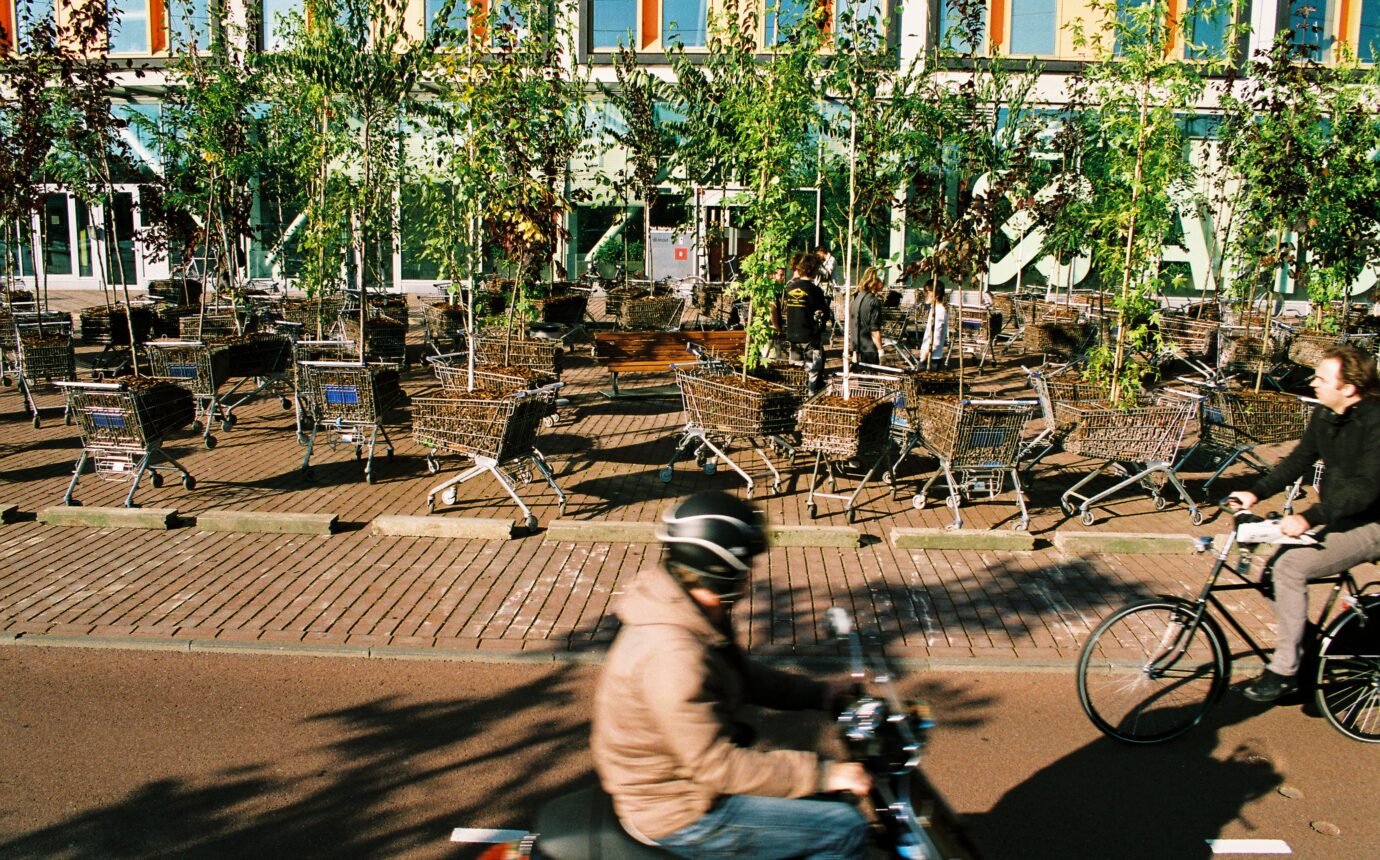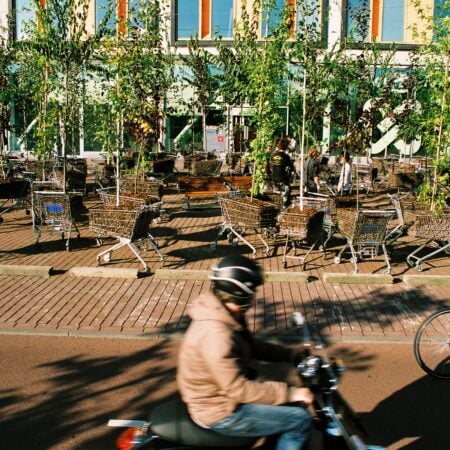Yonge-Wellesley Gains Vital Community Green Space
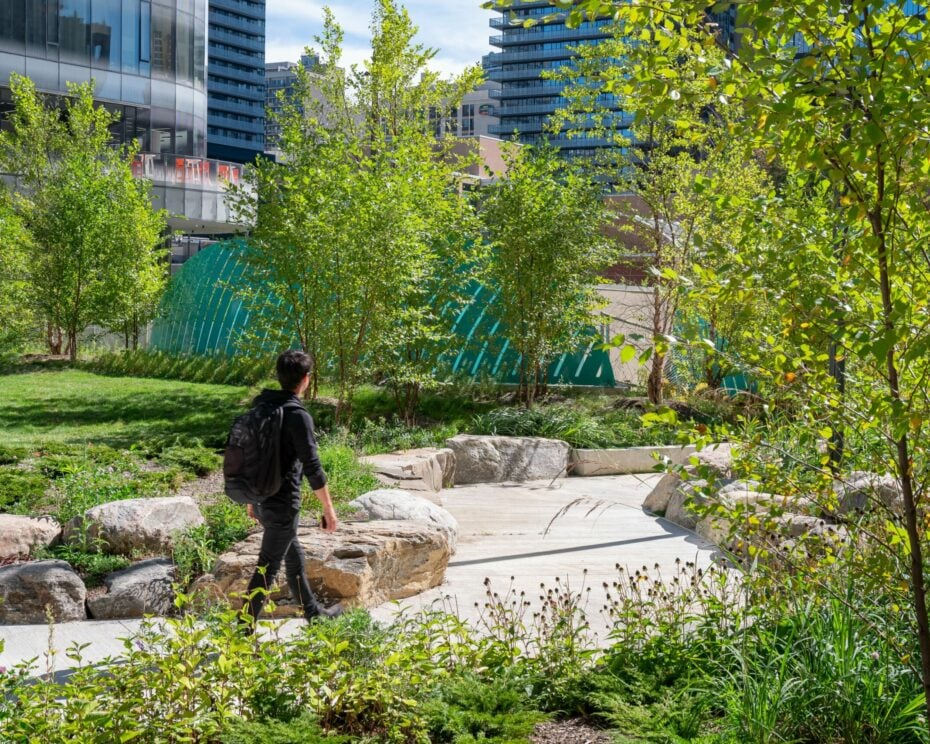
With metaphor and colour, artist Kenneth Lavallee’s beautiful work transforms Dr. Lillian McGregor Park
“Cranes are communicators,” says Kenneth Lavallee, the artist behind the public art in Toronto’s new Dr. Lillian McGregor Park. “They’re the tallest bird and the loudest voice, like mediators between different clans.” These were important tenets to the park’s namesake, Dr. Lillian McGregor (1924-2012), a nurse and community leader from the Whitefish River First Nation who dedicated herself to promoting Indigenous culture and education in the city.
In May, the City of Toronto marked the official opening of the 6,400-square-metre park near the intersection of Yonge and Wellesley. Like many things in this city, the park sits atop an underground parkade and between two condominium towers. It features a playground, grass lawns, masses of stones, multifarious plantings, wooden benches, a fenced-in dog area, and, at its heart, a mosaic medicine wheel set into the ground.
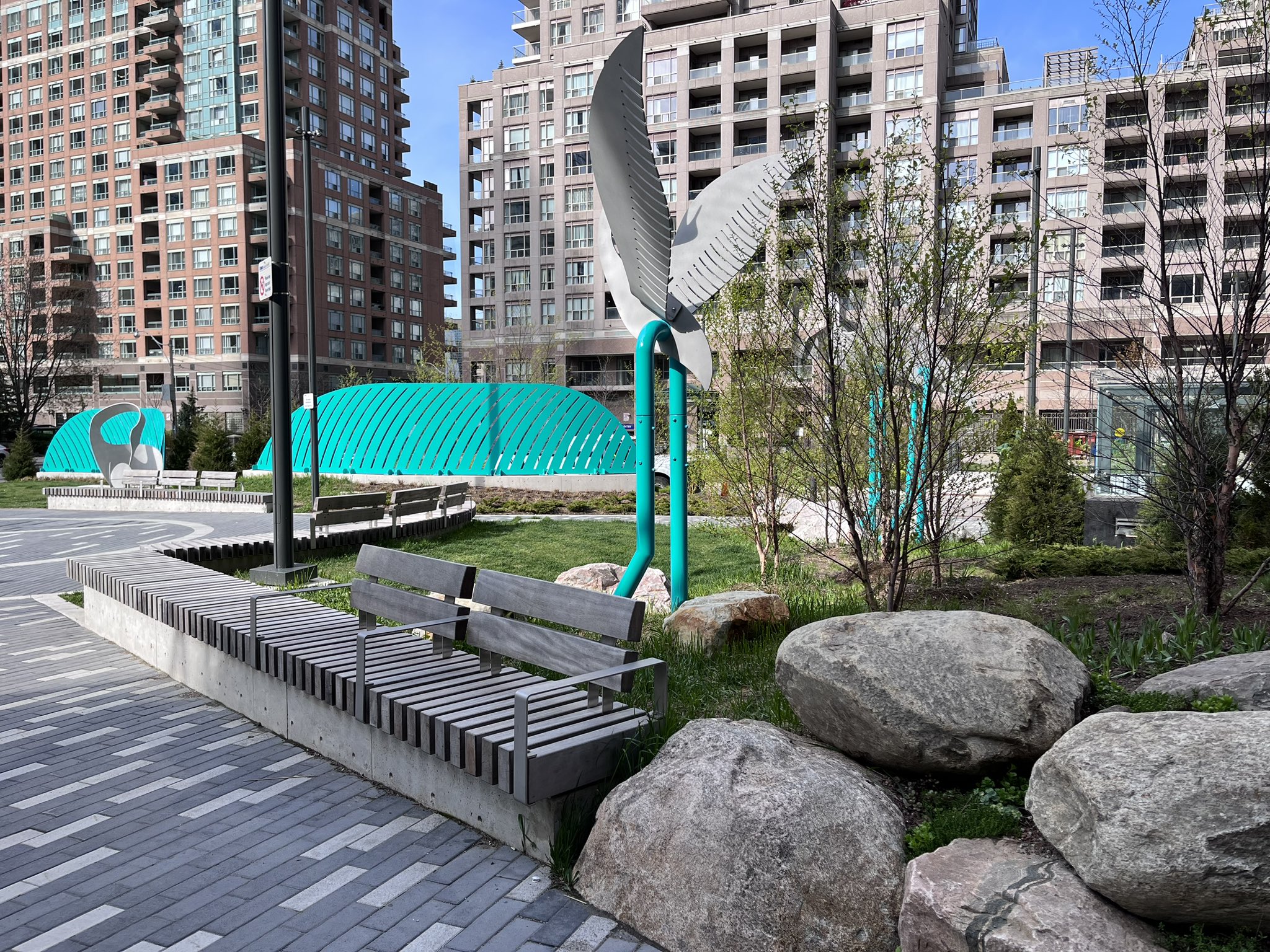
Its most striking features are the public art pieces designed by Winnipeg-based Métis artist Kenneth Lavallee, which include a soaring feather canopy, turquoise laser-cut waves reminiscent of reeds, and a family of cranes (for once, not the lifting machine). “I created reeds to protect the birds from the outside world and this little quiet space to raise a family and go through the four stages of life,” says Lavallee.
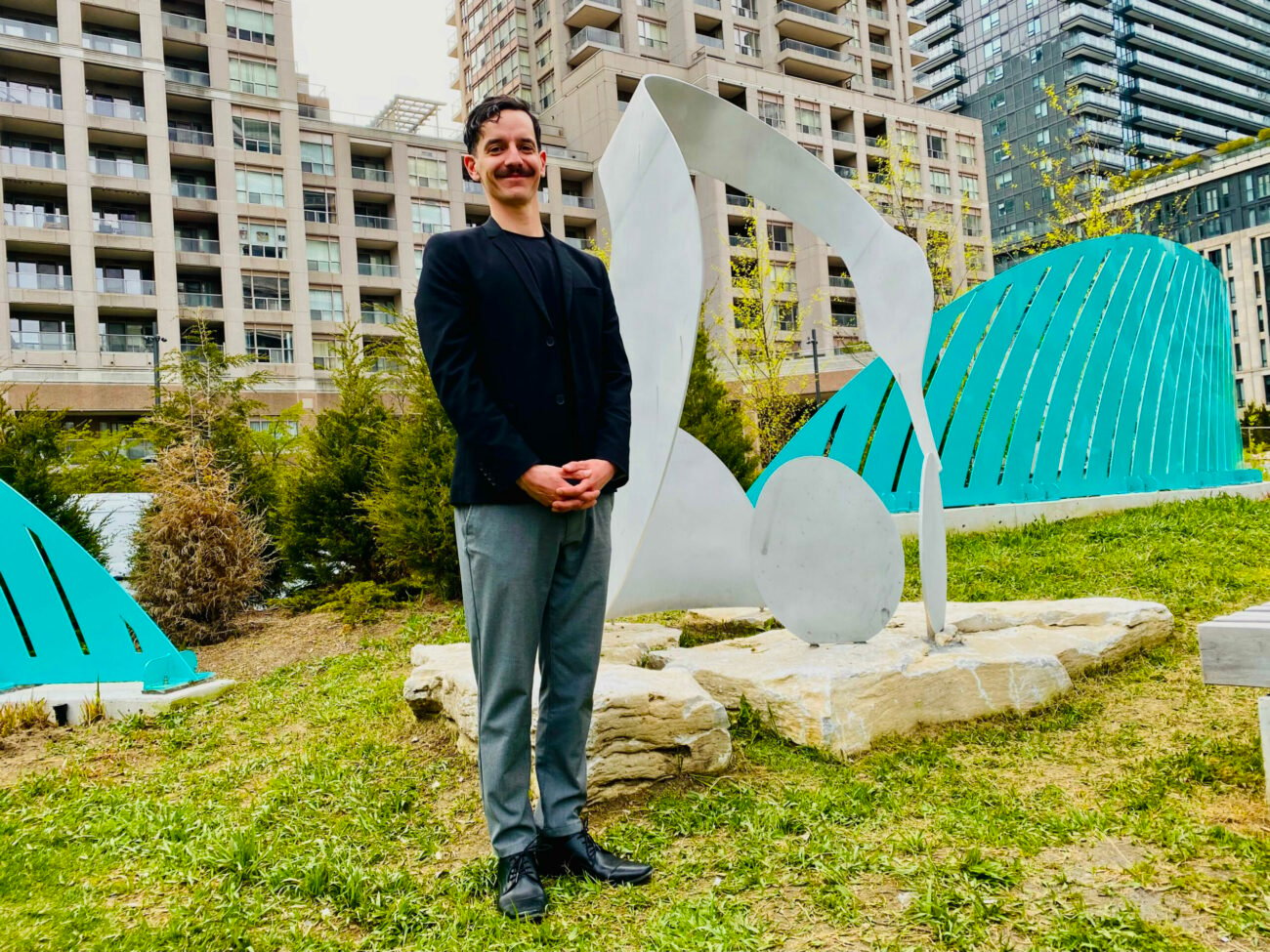
The crane imagery originated with Dr. McGregor’s family clan sign. The simple elegance of the cranes was inspired by graphics Lavallee had seen as a child while visiting Toronto City Hall. “There were these underground tunnels or parking passages marked with signage of animals: an otter, a caribou. Those stuck with me my whole life,” he says. “I wanted to reference that in the design of the cranes in a simplified, mid-century style.” The rocky outcrops and reed features came from Dr. McGregor’s childhood home on Birch Island.
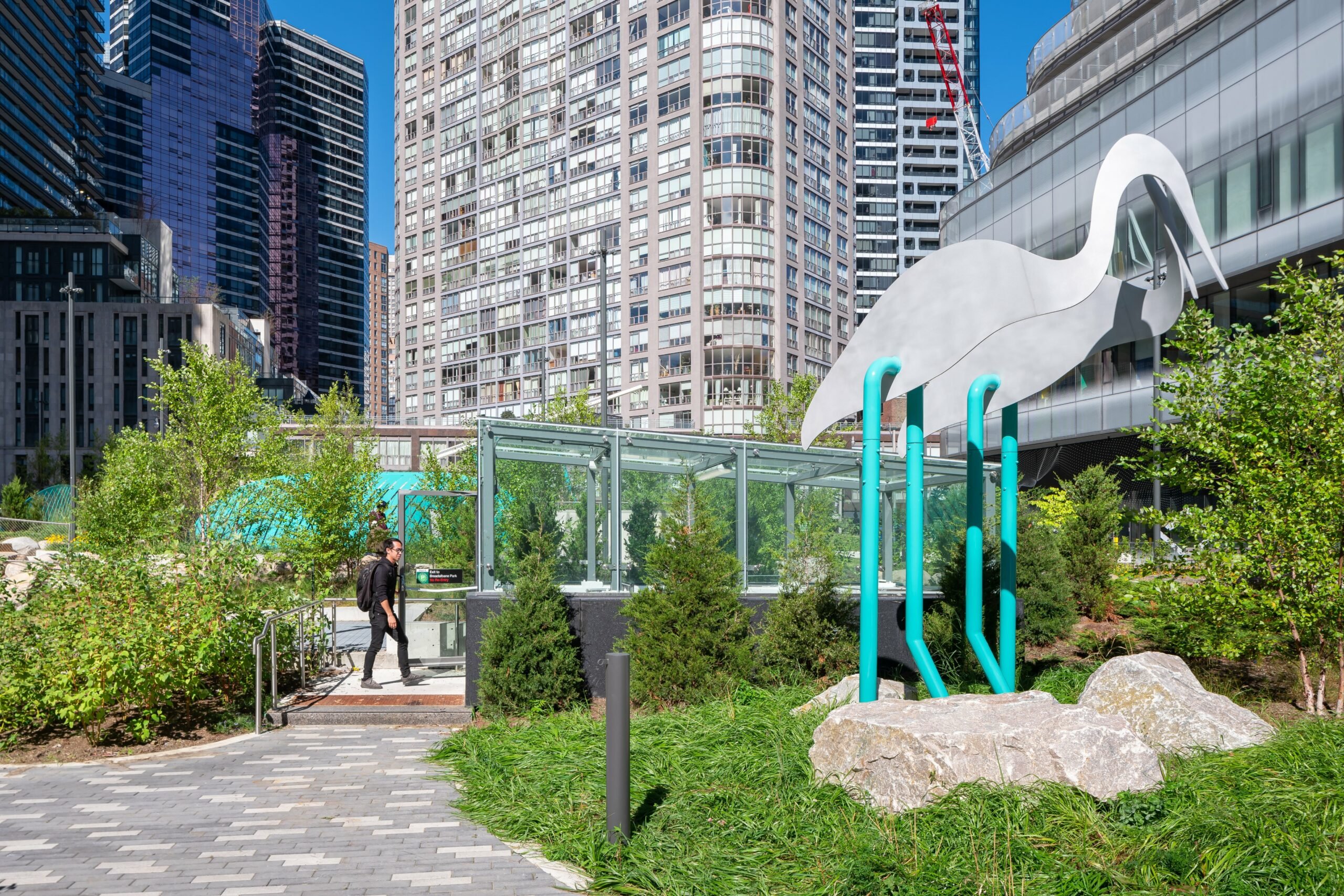
It was a challenging number of elements to build atop an underground parking garage in the dense area. What began as a casual conversation about transforming the unused lot into a park among community members in 2011 led to months of activism, petitions, and letter-writing campaigns. An initial call for public art proposals went out in 2016 with an optimistic plan for the park to be completed by 2018. But it took a whopping eight years, with pandemic-related delays and other hurdles, until Dr. Lillian McGregor Park’s official opening ceremony in 2023. The park is a result of collaboration between multiple community groups and organizations including the family of Dr. McGregor, the Bay-Cloverhill Community Association, the Church-Wellesley Neighbourhood Association, landscape design firm DTAH, Lanterra Developments, and the City of Toronto.
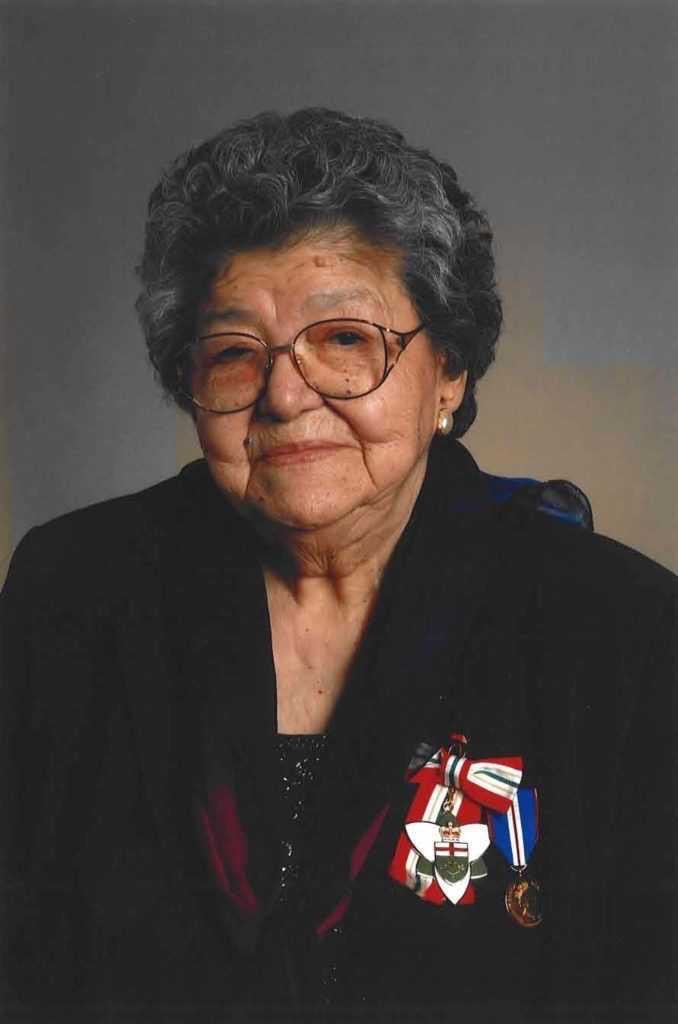
Dr. McGregor would be only too pleased to see how the space has already brought so many people together under a common desire. “Dr. McGregor is not some person from the distant past,” says Lavallee. “She is still making ripples in these communities. To be a part of that is a huge honour.” A city park has the power to transform a community and, even though it’s only been open for a few months, this one already has.









